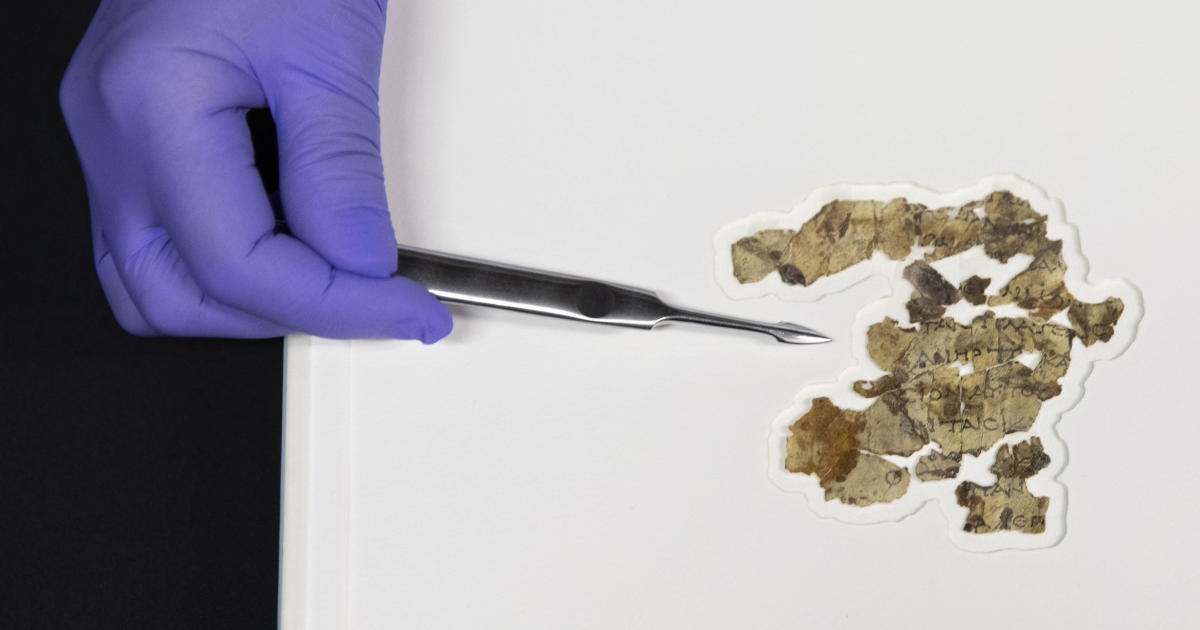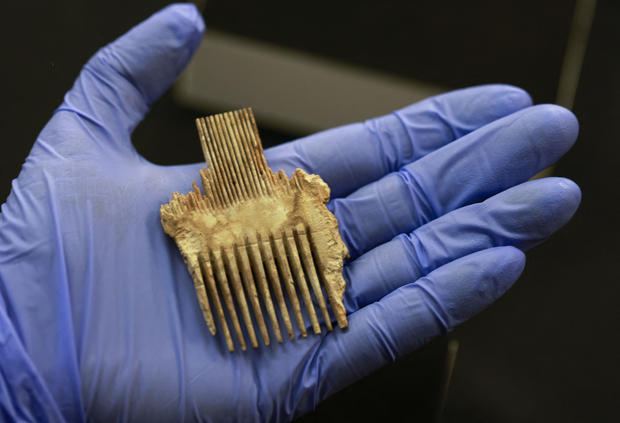
Israeli archaeologists announced the discovery of dozens of new ones this week Fragments of the Dead Sea ScrollFound in a desert cave and likely tucked away during a Jewish revolt against Rome nearly 1,900 years ago, the scraps of Biblical texts provide a rare window into the history of Judaism, early Christian life, and humanity.
Imtiaz Tyab of CBS News reports that when the first fragments of the Dead Sea Scrolls were found over 70 years ago, it was widely regarded as one of the most important archaeological finds of the 20th century.
To make the new discovery, archaeologists abseiled from a sheer cliff to the Cave of Horrors – so named after the dozens of human remains found inside. But while the cave’s history is as obscure as its name suggests, excavators have described what they found inside as “between heaven and earth.”

Dozens of fragments of the Dead Sea Scrolls were uncovered after nearly two millennia. The pieces of parchment are small – some miniscule – but they are large enough to exhaust wisdom, says Dr. Oren Ableman.
“These are the things you must do,” he quotes from one of the Greek excerpts. “Speak truth to one another, vindicate true and perfect righteousness in your gates, and plan no evil against one another. And don’t love perjury, for those are things that I hate, declares the Lord.”
MENAHEM KAHANA / AFP / Getty
The arid conditions of the Judean desert meant that dozens of other objects found in addition to fragments of the scroll have also stood the test of time, including ancient olive groves; remains of clothing and sandals and a wooden lice comb similar to the one that can be used today.
Protect or steal culture?
Archaeologist Chaim Cohen says the four-year project has been vital in protecting the treasures in the cave system from future looting.
“This project is protecting the area, because again, it is almost impossible to defeat the looters,” he said. “They’re at work, and the solution was to get to the case ahead of the looters.”
The massive dig site stretches across parts of southern Israel and the Israeli-occupied West BankIsrael has long been criticized for disposing of items found in the Palestinian territories.
International law prohibits bringing cultural objects from occupied territory, but those concerns have not stopped the Israeli Antiquities Authority from exhibiting the discoveries.
Beyond the biblical
Some artifacts go well beyond the biblical, including the 6,000-year-old skeleton of a small child and an almost perfectly preserved basket that wouldn’t look out of place in a home improvement store today.
MENAHEM KAHANA / AFP / Getty
“We didn’t understand because we thought the cave was empty, and when we came we looked at a very huge, intact basket,” said Yaniv Berman of the Antiquities Authority. When they got the results of the radiocarbon dating analysis, he said, “We were shocked! It’s 10,500 years old!”
It was another dazzling puzzle piece from the past, found alongside ancient wisdom that still resonates.

